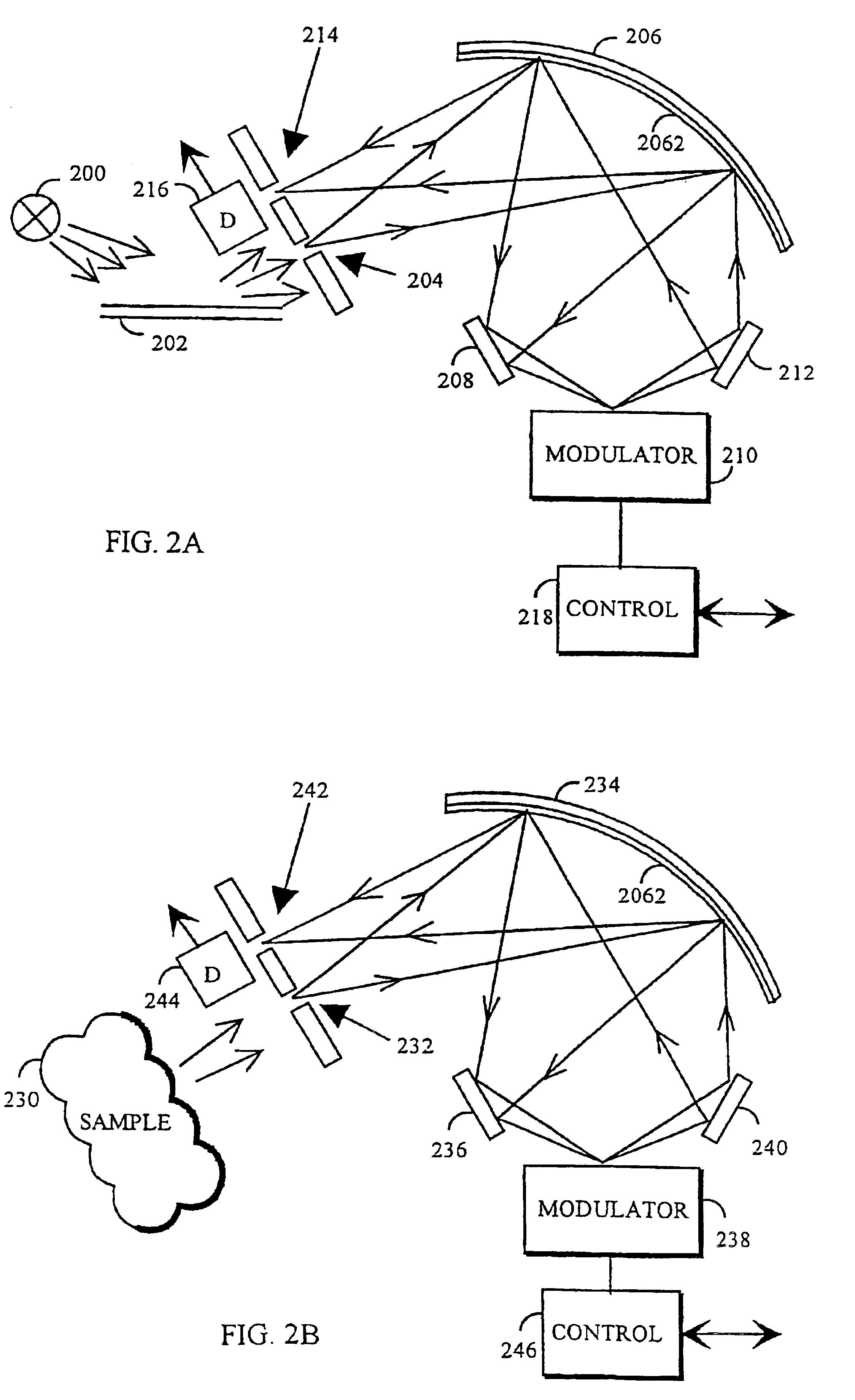Spectrometer and method for measuring optical spectrum
a spectrometer and optical spectrum technology, applied in the field of spectrometers, can solve the problems of high cost, high cost, and high cost of devices, and achieve the effects of low capacitance of small detectors, small surface area, and high speed
- Summary
- Abstract
- Description
- Claims
- Application Information
AI Technical Summary
Benefits of technology
Problems solved by technology
Method used
Image
Examples
Embodiment Construction
The measurement method and spectrometer according to the invention are particularly suitable for transmission and reflection measurements which are used for determining e.g. the concentration, thickness or temperature of substances, but the invention is not limited to these applications. The solution of the invention can be used for implementing an electrically controllable filter, which comprises sharp-edged pass bands and stop bands that can be selected in the desired manner, and which is utilized e.g. in research equipment. The solution of the invention can also be applied e.g. in automatic process analysers and sensors in which low price, small size and immunity to environment, for example, are important aspects.
First the solution of the invention will be described with reference to FIG. 1A. Whether the spectrometer needs an optical power source 100 depends on the application. If the sample 102 is self-radiant, for example, the optical power source 100 is not necessary. The opti...
PUM
 Login to View More
Login to View More Abstract
Description
Claims
Application Information
 Login to View More
Login to View More - R&D
- Intellectual Property
- Life Sciences
- Materials
- Tech Scout
- Unparalleled Data Quality
- Higher Quality Content
- 60% Fewer Hallucinations
Browse by: Latest US Patents, China's latest patents, Technical Efficacy Thesaurus, Application Domain, Technology Topic, Popular Technical Reports.
© 2025 PatSnap. All rights reserved.Legal|Privacy policy|Modern Slavery Act Transparency Statement|Sitemap|About US| Contact US: help@patsnap.com



